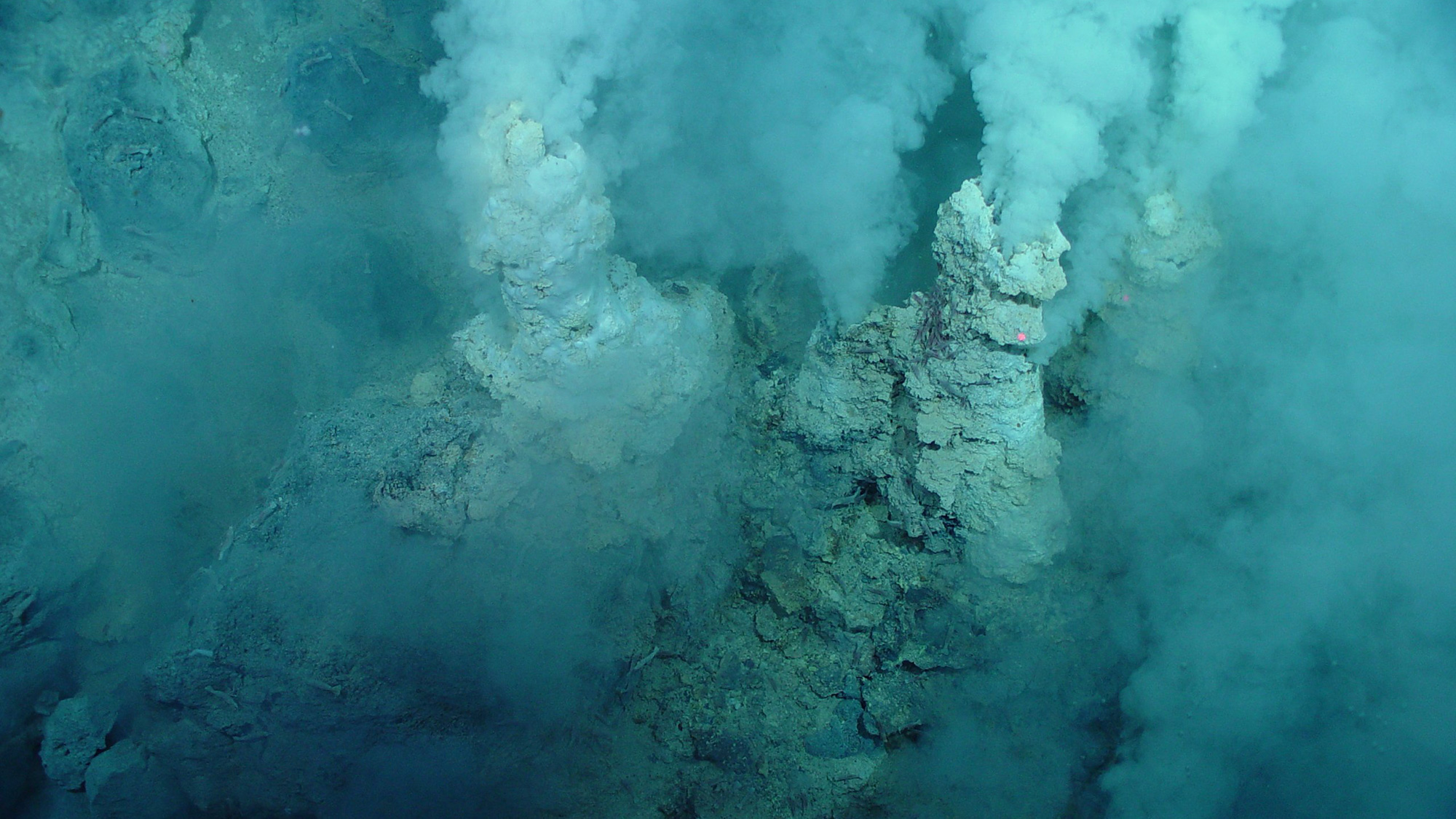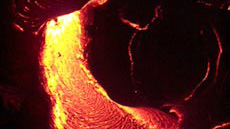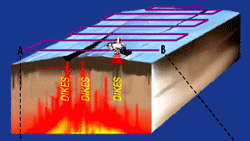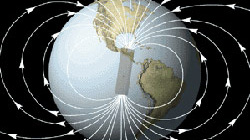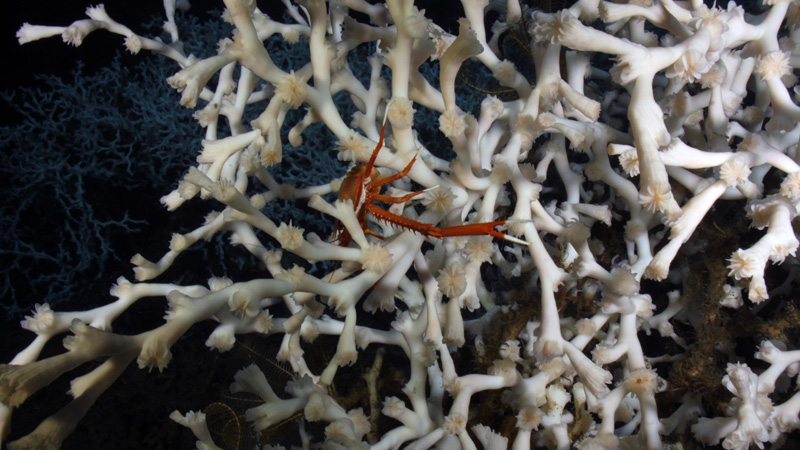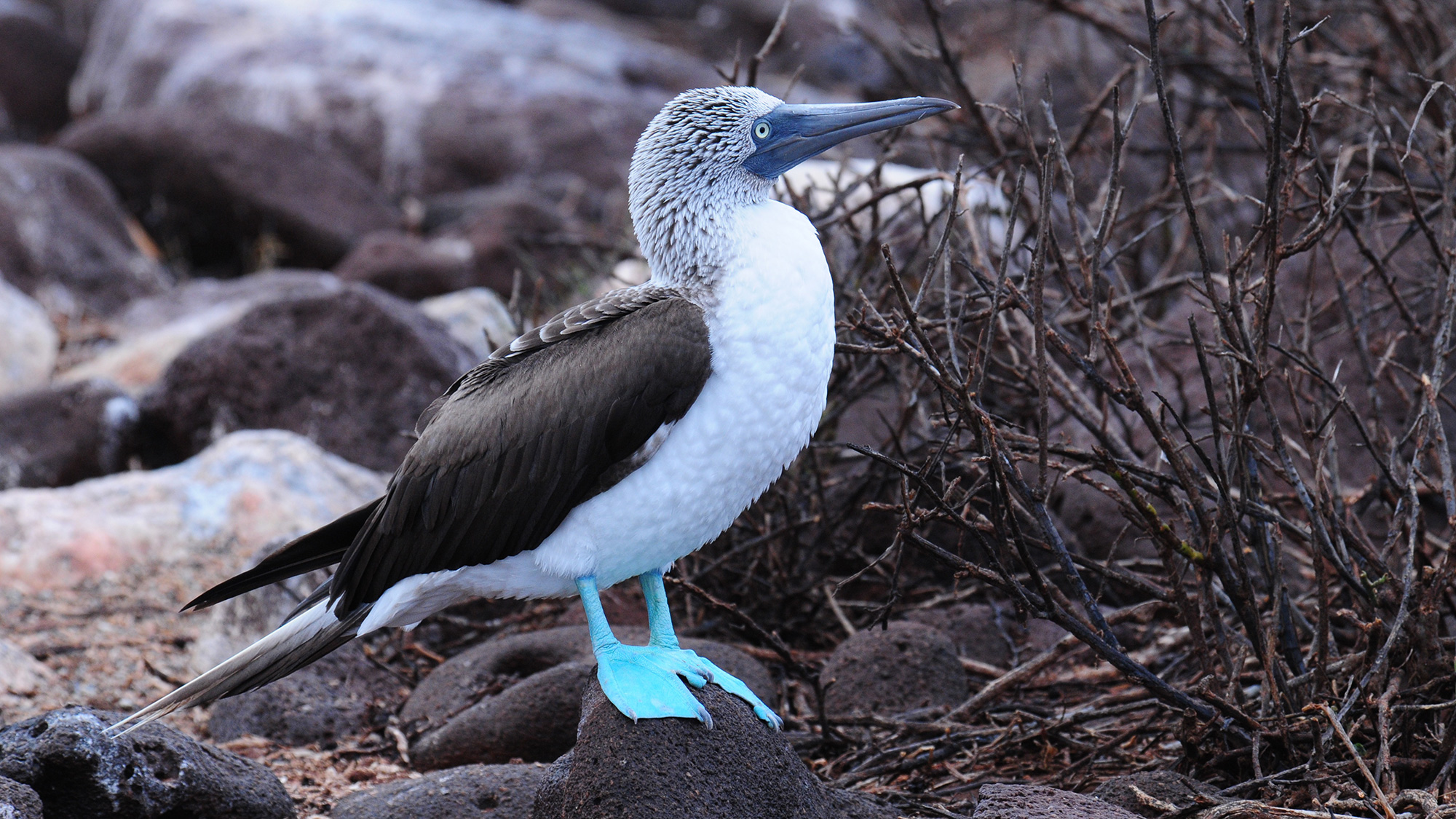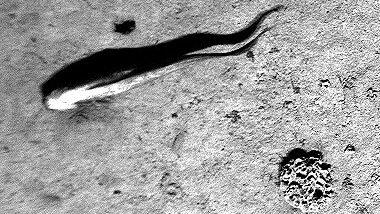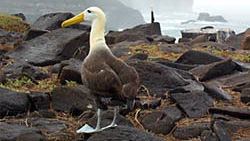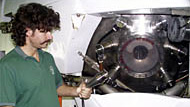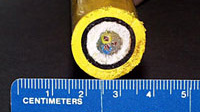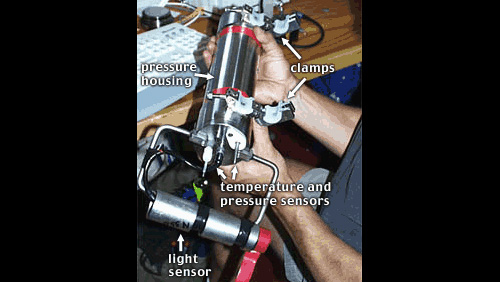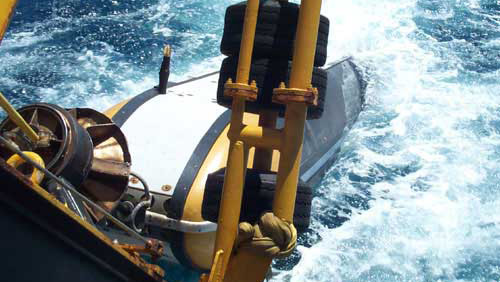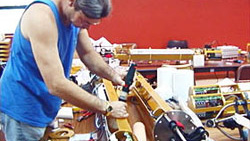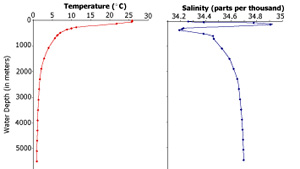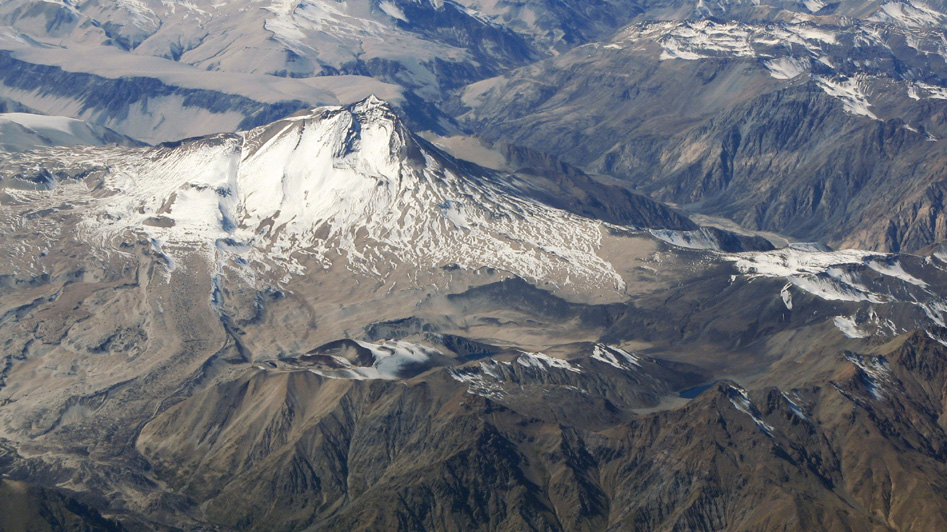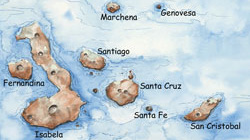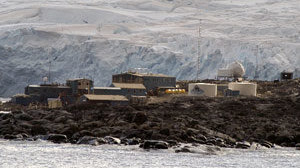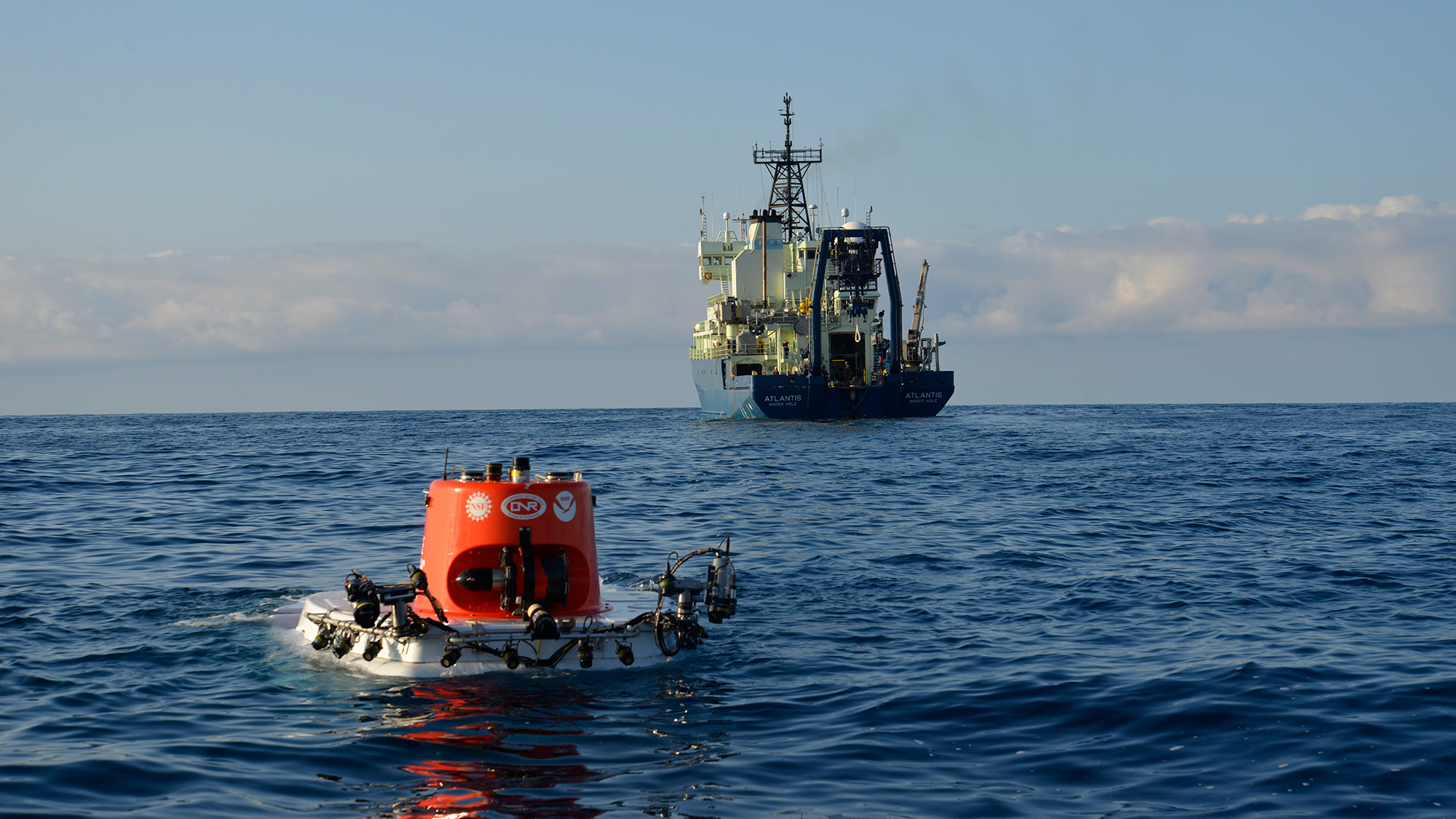Hot Topics
Hydrothermal Vents
Godzilla, Sasquatch, and Homer Simpson: The Curious Names of Deep-sea Features
Hydrothermal vent fields and their individual chimneys may be places for serious scientific research, but some of their names come straight from science fiction.
Read MoreLooking for Microbes
Prof. Rachel Haymon and Dr. Patricia Holden, from the University of California – Santa Barbara, have an idea about how to look for microbes in active hydrothermal vent chimneys.
Read MoreBiogeography of deep-sea hydrothermal vent faunas
Small but mighty, bacteria live everywhere at hydrothermal vents.
Read MoreBacteria at Hydrothermal Vents
Learn about bacteria at hydrothermal vents, which inhabit almost everything: rocks, the seafloor, even the inside of animals like mussels.
Read MoreSeafloor Geology
Hotspots & Cool Volcanoes: The New England Seamounts
If you drained the water from the ocean basins, some of the most dramatic features you would see are groups or lines of underwater volcanoes called “seamounts.”
Read MoreWhat Does a Young Galápagos Submarine Lava Flow Look Like?
As we investigate the submarine slopes of Galápagos volcanoes we see life that no one has photographed before.
Read MoreLava Flows
When a volcano erupts, the molten rock (or magma) that comes out of the Earth is called lava. Lava is the most common form of material erupted from volcanoes that form oceanic islands.
Read MoreSeafloor Gravity
Learn about what gravity is and why using a gravimeter in Alvin can help geophysicists learn about the ocean crust.
Read MoreSeafloor Magnetics
Learn about the Earth’s magnetic field and why measuring it near the seafloor can help geophysicists understand how the ocean crust forms.
Read MoreExtreme Creatures
You Feed Me, I Feed You: Symbiosis
You Feed Me, I Feed You: Symbiosis Some organisms in the ocean have developed a special relationship with each other that helps ensure the survival of both organisms. In many cases, the pair includes a microbe and a host animal. The microbes provide their host animal with food and the host provides the microbes with…
Read MoreDeep Sea Corals
When most people think of corals, they think big. Big, interconnected structures such as the Great Barrier Reef off Australia, which can be seen from the Space Shuttle. Expedition 7 is going after much smaller coral formations that lie deep within the ocean, past the point where light penetrates.
Read MoreSeabird Observations in the Western Galápagos Islands
One of the investigations complementing the geologic studies the scientists on board RV Revelle are carrying out, is a survey of the seabirds inhabiting the Galápagos.
Read MoreDeep Sea Biology
As we investigate the submarine slopes of Galápagos volcanoes we see life that no one has photographed before. The creatures that live at these depths have adapted to a way of life in one of the world’s most challenging environments.
Read MoreGalápagos Animal and Marine Life
The words “Galápagos Islands” bring to mind images of fantastic animals and plants, ranging from dragon-like iguanas and comical blue-footed boobies to incredibly slow moving giant tortoises lumbering through arid lava fields dotted with cacti.
Read MoreOceanographic Tools
Keeping the “Big O” Out of Alvin
Alvin pilot BLee Williams explains the dangers of using electricity in the ocean.
Read MoreABE: the Autonomous Benthic Explorer
I’d like you to meet ABE. ABE is a robot. You’ll notice that its name is spelled with capital letters. The “E” stands for Explorer. The B stands for Benthic, which means the bottom of the oceanthats where ABE explores. The A is for Autonomous, which means by itself or without any help.
Read MoreMeasuring Temperature At Hydrothermal Vents — Al Bradley’s Ingenuity
ICLs (Inductively Coupled Links) transmit data through water without a cable.
Read MoreFinding Telltale Hydrothermal PlumesWith MAPRs (Miniature Autonomous Plume Recorders)
MAPRs (Miniature Autonomous Plume Recorders) are small instruments that measure ocean pressure and how warm and clear the ocean water is.
Read MoreBob Collier and Marvin Lilley — The Hydrothermal Vent Prospecting Team
CTD (Conductivity-Temperature-Depth) sensors are used to detect hydrothermal plumes in the deep ocean.
Read MoreThe Hawaii MR1 Side-Scan Sonar Mapping System
The MR1 side-scan sonar is a special type of seafloor imaging system that creates maps of seafloor terrain over wide swaths.
Read MoreAutonomous Hydrophone Array (AHA) – Monitoring Volcanic and Tectonic Processes on the Mid-Ocean Ridge
Looking for new volcanic eruptions on the global mid-ocean ridge and understanding when and where eruptions take place is one of the most exciting developments in marine geology and geophysics.
Read MoreHistory of the Earth
Dating Corals, Knowing the Ocean
Coral skeletons record the age of the coral, as well as the age of the water in which they grow. Using radioactive decay dating techniques on fossil, scientists can tease this information apart.
Read MoreGoing vertical: Gauging ocean overturn rate
Water in the ocean has different ages at different depths. Scientists can determine these ages, and find out how long water takes to circulate through the entire ocean and then come back to the surface.
Read MoreHow Old is That Volcano?
One of the most common questions that scientists and nature lovers ask when they see an interesting rock is: how old is it?
Read MoreIntroduction to the Galápagos Islands
The Galápagos is a group of volcanic islands, each of the 13 major islands is made up of at least one volcano.
Read MoreWhat's it like to go on a cruise?
Deception Island: Fire and Ice, History and Humans
Deception Island has fire and ice in its history, and in the present day. Mountainous, half covered by glaciers and mostly covered with black volcanic ash, Deception is an active volcano.
Read MoreLife at Palmer Station
Palmer Station, on the Western Antarctic Peninsula is the smallest of three research stations the U. S. maintains in Antarctica.
Read MoreSeasickness
It’s a fact of life on ships, but nobody talks about it much. Why should they? It’s not a pretty picture. Yep, I’m talking about the green scourge, Neptune’s revenge—seasickness.
Read MoreTo the Paul Revere Science Club
On February 2, Gary Comer, Bob James, and Alvin pilot BLee Williams journeyed to the bottom of the sea. Gary wrote of this amazing experience to the members of the The Paul Revere Science Club at Paul Revere Elementary School in Chicago, Illinois.
Read MoreWhat Is It Like To Go Down In Alvin?
So you want to dive to the bottom of the ocean in a submarine? Better bring your wool hat, because it is cold down there.
Read More




